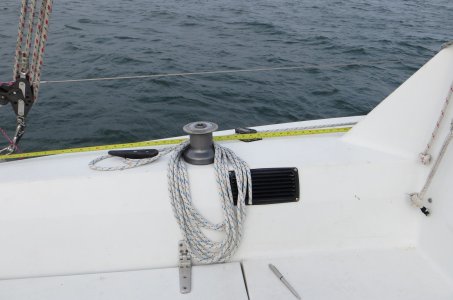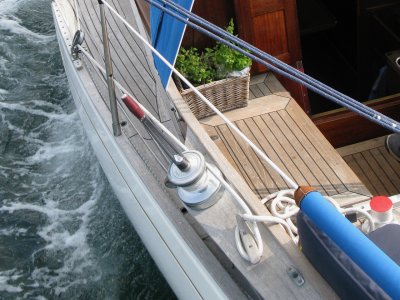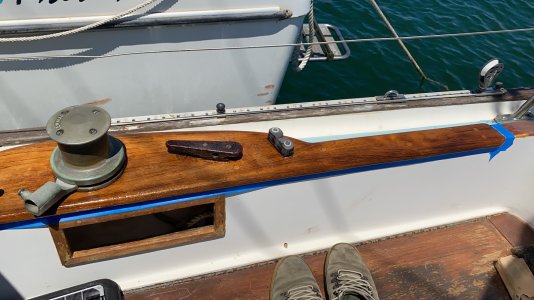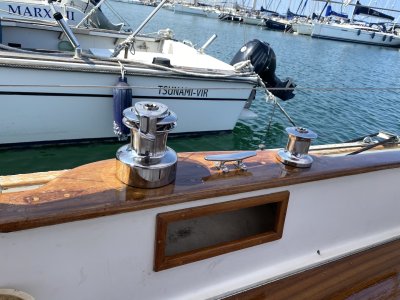iamtjc
Member
I have a jamming cleat on my boat to secure the jib sheet, I have always found it a right pain being very difficult to extract the sheet from the cleat.
Please ignore the tape measure and the rope in the (old) picture which was the furling line when I got the boat.
I have just had the thought that the cleat is on backwards! I haven't found a description of the intended setup/usage for these items. Any comments?

Please ignore the tape measure and the rope in the (old) picture which was the furling line when I got the boat.
I have just had the thought that the cleat is on backwards! I haven't found a description of the intended setup/usage for these items. Any comments?





